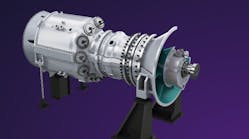G-7 Nations' Nuclear Associations make Climate case for Reactor-based Energy to reach Net Zero goals
Energy advocates from most of the world’s top economic nations have banded together to declare support for nuclear energy power plants and try and spur those nations' leaders to accelerate future development and expansion of the carbon-free reactor energy.
The Group of 7, or G7 nations, included leaders of nuclear energy associations from the United Kingdom, Japan, Canada, the European Union and the United States. The declaration was made during the G7 climate summit in Sapporo, Japan.
“To support decarbonization at the scale required, the international community must work to extend the operating period of existing nuclear generation resources, develop the policies to enable new nuclear deployment and accelerate the development of a new portfolio of reactor technologies,” the declaration reads.
Groups included in the forum were the World Nuclear Association, the Canadian Nuclear Association, Japan Atomic Industrial Forum, nucleareurope, Nuclear Energy Institute from the U.S. and Nuclear Industry Association of the U.K.
The renewed focus comes as developed nations ponder the path toward Net Zero energy emissions goals. Many industry advocates believe those benchmarks cannot be met without nuclear and perhaps carbon capture.
Overall, the G7 is made up of the U.S., U.K., European Union, Japan, Canada, German, France and Italy. France is a part of the resolution calling for greater nuclear energy engagement, while Germany and Italy are phasing out the resource in the electricity generation mix.
In fact, Germany has been criticized by some of its neighbors for becoming too dependent on Russia natural gas, an issue which shifted into crisis mode in the past year after Russia invaded Ukraine. The G7 nuclear forum strongly condemned Russia's continuing act of aggression.
The G7 declaration also happened even as Germany is shutting down its nuclear power capacity, as noted earlier. Meanwhile, Japan is restarting its program some 12 years after the Fukushima meltdown, and new nuclear construction projects are ongoing or near completion in the U.S. and U.K.
Related Reactor stories from EnergyTech
Canadian Nuclear Lab, Clean Core partnering on Advanced Thorium Fuel work
Cumulus Data marks Construction Milestone for direct Nuclear to power Data Center
New York Nine Mile plant electrifying Green Hydrogen production
In the U.S., Georgia Power recently put its Vogtle Reactor 3 into commercial operation after close to a decade of work. The $30 billion-plus construction project is adding two new reactors, with Unit 4 scheduled for commissioning later this year or 2024 due to some work delays, financial issues and the earlier bankruptcy of original contractor Westinghouse.
In the U.S., the nation’s 94 nuclear energy units account for about 20 percent of the electricity resource generation, and more than half of its carbon-free power. The federal government’s Nuclear Regulatory Commission has also given some approvals to some advanced nuclear and small modular reactor projects, which are designed to be even safer and less costly than mammoth projects such as Vogtle 3-4 and the Sizewell C work in England.
In Sapporo, the global associations encouraged member energy ministries to maximize the utilization and benefits of existing nuclear power plants, accelerate development of new generation capacity and collaborate internationally on best practices to ensure safety, efficiency and nuclear waste disposal.
Nuclear power plants do scheduled maintenance and refueling work every 18 months or so. Spent fuel roads are removed and put into cooling systems before being stored waste. Spent fuel is radioactive and has lengthy half lives considered a health risk to humans.
The amount of waste generated, however, is relatively low considering the fuel’s baseload and utility-scale usage, according to the U.S. Nuclear Energy Institute.
“All of the used fuel ever produced by the commercial nuclear industry since the late 1950s would cover (one) whole football field to a height of approximately 10 yards,” reads the NEI primer on nuclear waste disposal.
Nuclear meltdowns such as the Chernobyl disaster in the Soviet Union (caused by human error during a testing phase) and the Fukushima loss in Japan (initially caused by a tsunami swamping the facility) have resulted in hundreds of lives lost, according to various and disputed statistics.
The now defunct Three Mile Island Nuclear Generating Station in Pennsylvania suffered a partial meltdown in 1979. Some radioactive material was released, although some reports indicated the amount of radioisotopes exposed to nearby residents was less half of what they received during the average chest X-ray examination.
Some health research efforts have determined that cancer rates rose in the population nearest to Three Mile island, while others have not found an extensive or even quantifiable increase in health risks or death, according to reports.
-- -- --
(Rod Walton, senior editor for EnergyTech, is a 15-year veteran of covering the energy industry both as a newspaper and trade journalist. He can be reached at [email protected]).
Follow us on Twitter @EnergyTechNews_ and @rodwaltonelp and on LinkedIn





